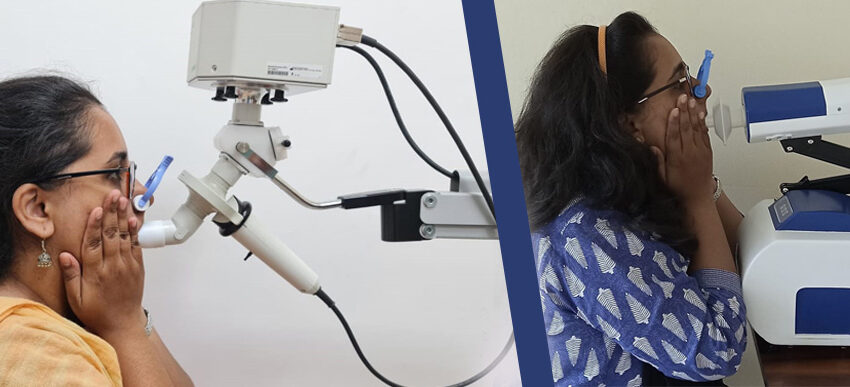
- July 1, 2021
- 0 Comments
- 1991 Views
- 8 Likes
- Lung Functions
Using Sound Waves to Measure Lung Functions
The lung is an important organ that nourishes the body with oxygen, generates 90% of the body’s energy. On a daily basis, each one of us inhales 10,000 lts of air, which the lung extracts 1000 lts of Oxygen and transfers it to the haemoglobin present in the circulating red blood cells. In order to perform this crucial function, the lung has been designed with a unique architecture. The branching airways and the alveolo-capillary network are the two important structural components of the lungs that allow air to be distributed to 600 million alveoli or air sacs and then transferring the oxygen to the circulation respectively.
Measuring lung function is a lot more challenging than measuring blood pressure or blood glucose. Spirometry that was invented in 1845 still remains the gold standard test for measuring both obstructive airways diseases as well as restrictive lung diseases. Measuring lung function, not only assists in the correct diagnosis but also helps to evaluate the severity and decide appropriate pharmacotherapy.
Though spirometry is considered as the gold standard test to measure lung function, the complexities in performing the test has proven to be a disadvantage for elderly people, children < 5 years of age and people with physical and cognitive limitations. Also being an effort dependent and aerosol generating test, its use in the COVID pandemic is limited.
In the year 1956, DuBois et al, described the Forced Oscillometry Technique (FOT), which used a single frequency sinusoidal pressure sound wave generated by a loud-speaker that was passed into the along with the tidal breathing. In the year 1975, Michaelson et al, developed a computer driven loud-speaker which generated sound waves of multiple frequencies, which was known as Impulse Oscillometry (IOS). The resulting Impedance, resistance and reactance values gave an insight into lung function properties.
The FOT/IOS techniques has various advantages over the spirometry test, such as:- The person has to perform only tidal breathing during the test and not the forced inhalation and exhalation manoeuvres required for spirometry.
- Children <5 years of age and the elderly can easily perform this test.
- FOT/IOS can also be done on patients who are on ventilator or are sleeping
- FOT/IOS is more sensitive in detecting peripheral/small airways obstruction then the standard spirometry
- FOT/IOS parameters also assist in differentiating between Asthma and COPD
